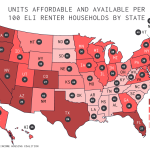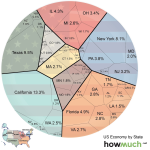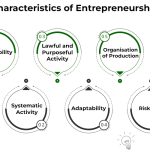The question of whether Trump can fire Fed chairman Jerome Powell has stirred much debate among economists and political analysts alike. Past interactions between President Trump and Powell reflect a contentious relationship, with the former frequently criticizing the Federal Reserve’s decisions on interest rates, which he believes threaten his economic agenda. As Trump’s economic policies aim for aggressive stimulus strategies, Powell’s cautious approach to monetary policy, which focuses on ensuring price stability and economic growth, has become a point of contention. This tension escalated when Trump hinted that he might dismiss Powell, raising concerns about the independence of the Federal Reserve and its implications on market stability. Ultimately, while Trump has publicly stated he plans no such action, the underlying tensions between presidential authority and Fed independence remain a critical area of discussion in U.S. economic policy.
The notion of whether the president can terminate the head of the Federal Reserve revolves around the complex dynamics of regulatory independence and executive authority. Jerome Powell, as the central bank’s chair, plays a pivotal role in shaping monetary policy amidst fluctuating economic conditions, which is often at odds with the immediate goals of presidential administrations. Trump’s statements regarding the Fed’s direction and interest rate policies reflect a broader narrative about the balance of power within U.S. economic governance. The potential for removal raises important questions not only about market trust in the Federal Reserve but also about the long-standing tradition of keeping monetary policy insulated from political pressures. These discussions underscore the critical interplay between fiscal leadership and the operational autonomy of financial institutions in a democratic framework.
Can Trump Fire Fed Chairman Jerome Powell?
The question of whether President Trump can fire Federal Reserve Chairman Jerome Powell has been a contentious topic during his presidency. While the Federal Reserve operates as an independent entity meant to insulate its decision-making from political pressures, the legal framework lacks clear definitions on the removal of the Fed chair. Under the Federal Reserve Act, members of the Board of Governors can be removed for cause, but the nuanced interpretation of what constitutes ’cause’ regarding the chair’s four-year term remains debated. This vagueness creates a potential legal battleground that could impact the economy significantly.
If Trump were to attempt to fire Powell, the repercussions could resonate through financial markets. Analysts caution that such a move could jeopardize the hard-won independence of the Federal Reserve, potentially leading to increased volatility in interest rates. Historically, Chairpersons like Powell have emphasized the need for independence to ensure the credibility of monetary policy. Market participants are acutely aware of this, and any perceived threat to this independence could result in a reaction that drives interest rates higher, further complicating the economic landscape.
The Importance of Fed Independence
The independence of the Federal Reserve is a cornerstone of U.S. monetary policy, designed to shield it from political influences that may favor short-term economic gains at the expense of longer-term stability. This separation allows the Fed to adjust interest rates based on economic indicators rather than political pressures, fostering a tradition that aims to control inflation while promoting sustainable growth. Should Trump fire the Fed chairman, it would not only set a dangerous precedent but also instill fear that future decisions could undermine this essential independence.
Respecting the autonomy of the Federal Reserve enables a more predictable policy environment. Investors and consumers alike benefit from a central bank that is free to prioritize economic indicators over political agendas. By maintaining this independence, the Fed can keep inflation near its 2% target while also responding flexibly to economic changes, ensuring that interest rates are adjusted in a manner that reflects real economic conditions rather than the whims of political leadership.
Market Reactions to Potential Fed Chair Changes
Markets are exceptionally sensitive to news about potential changes in the Federal Reserve’s leadership, particularly the chair. The correlation between market reactions and the possibility of Trump firing Powell showcases how interconnected federal monetary policy is with market health. Generally, when there is uncertainty about leadership at the Fed, investors begin to worry that the new chair would favor more aggressive interest rate cuts, leading to inflation concerns and an overall loss of credibility for the institution.
When interest rates fluctuate in response to political moves rather than established economic indicators, long-term investments could be adversely affected. For instance, if Trump were to dismiss Powell, it might initially lower rates but would likely lead to a selling pressure on longer-term securities as investors would seek higher yields to compensate for perceived inflation risks. This paradox demonstrates how the market values the independence of the Fed; a chair who could be influenced by political motives threatens the underlying stability that investors rely on.
Judicial Perspective on Fed Chairman Removal
The judicial perspective on whether Trump could legally remove Jerome Powell from his position is complex and rooted in the interpretation of the Constitution and the Federal Reserve Act. Recent Supreme Court rulings have raised questions regarding the scope of presidential authority over an independent agency like the Federal Reserve. Historically, cases such as Humphrey’s Executor provide a precedent that supports the ‘for cause’ protection of agency heads, yet this is under scrutiny as the current court leans toward an expanded view of executive power.
If the courts were to ultimately side with the view that the president can dismiss the Fed chairman without explicit ‘for cause’ justification, it could lead to a reconfiguration of how independent agencies operate. Such a ruling would not only affect Powell’s tenure but could also change the landscape of federal monetary policy, creating ripples across the financial system and requiring an adjustment period for investors and policymakers alike.
Impacts of Trump’s Economic Policies on the Fed
Trump’s economic policies, particularly his stance on trade and tariffs, have caused friction with the Federal Reserve’s objectives. Powell has publicly indicated that these policies could lead to higher inflation and economic deceleration, reflecting a significant divergence between the White House and the Fed’s monetary strategies. Trump’s push for reduced interest rates as a stimulus measure often conflicts with the Fed’s cautious approach to temper inflation through measured rate hikes.
These conflicting approaches highlight the nuanced relationship between the presidency and the Fed. While Trump may desire more aggressive monetary easing to stimulate immediate growth, Powell and the Federal Reserve stress the importance of maintaining inflation targets to safeguard long-term economic health. This tension underscores the crucial need for the Fed’s independence to ensure that monetary policy remains focused on macroeconomic stability rather than being derailed by short-term political pressures.
Jerome Powell’s Session with Lawmakers
The interactions between Jerome Powell and lawmakers are critical moments where Fed policies are scrutinized and debated. Powell, as the chair of the Fed, is often called upon to explain the rationale behind monetary decisions, particularly in times of economic uncertainty. These sessions illuminate the delicate balance the Fed must navigate between political expectations and its mandate to promote stable prices and maximum employment.
During his testimony, Powell’s responses can significantly influence market perceptions and behaviors. For instance, any indication of a potential shift in monetary policy or acknowledgment of economic pressures can trigger immediate reactions in stock prices and bond yields. As lawmakers express their views and preferences, Powell’s ability to uphold the Fed’s integrity and commitment to independent decision-making becomes vital in maintaining credibility and confidence among investors.
Understanding FOMC Dynamics Under Powell
The Federal Open Market Committee (FOMC) functions as the main decision-making body of the Federal Reserve, tasked with setting interest rates and guiding monetary policy. Under Powell’s leadership, the committee has emphasized consensus-building, requiring extensive dialogue and collaboration among its members. This approach highlights a dramatic shift from previous eras, illustrating how the chair now plays a crucial role in fostering agreement rather than unilaterally directing policy.
This collaborative dynamic can influence the effectiveness of monetary policy announcements. When the committee reaches a consensus, it not only enhances the credibility of the Fed but also minimizes the risk of backlash from market participants. Should Trump succeed in removing Powell, the FOMC’s ability to maintain such cohesion, and subsequently, its policy effectiveness may be jeopardized, likely leading to reactive and unpredictable movements in the marketplace.
The Role of Interest Rates in Trump’s Economic Strategy
Interest rates serve as a fundamental tool in forging economic policies, affecting everything from consumer spending to business investment. Trump’s strategy has often centered on pushing for lower interest rates to fuel growth, particularly during periods of economic slowdown. However, this stance presents a duality; while lower rates can stimulate activity, they may also lead to long-term inflationary concerns that the Fed aims to mitigate.
By advocating aggressively for interest rate cuts, Trump inadvertently exposes the potential pitfalls of compromising the Fed’s independence. If short-term growth is prioritized over inflation control, the result could be an overheated economy, ultimately necessitating a more considerable adjustment period. This leads to the necessity of a delicate roadmap, balancing immediate economic stimulation with long-term financial stability.
Potential Outcomes if Powell’s Term Ends Early
If President Trump were to force the resignation of Jerome Powell before the completion of his four-year term, the potential outcomes could reshape the landscape of U.S. monetary policy. Markets would likely respond with uncertainty, as the mere act of replacing a chair known for his commitment to gradual policy changes could fuel speculation about the future direction of monetary policy. Investors may be concerned about a successor who might implement looser monetary policy and thus destabilize inflation expectations.
On the other hand, having a new chair could provide an opportunity for fresh perspectives and strategies aligned more closely with the administration’s economic objectives. However, as history illustrates, the challenges of maintaining Fed credibility are complex, and any sudden shifts could undermine the trust established by previous leadership. Therefore, the timing of any transition is crucial for mitigating market unease and ensuring continued economic growth without jeopardizing inflation levels.
Frequently Asked Questions
Can Trump fire Fed chairman Jerome Powell before his term ends?
Technically, President Trump could attempt to remove Fed Chairman Jerome Powell, but such an action raises significant legal and market concerns. The Federal Reserve Act allows for governors to be removed for cause, but it doesn’t clearly outline the removal process for the chair. Analysts warn that firing Powell could undermine the Federal Reserve’s independence, a cornerstone of U.S. monetary policy.
What impact would firing Fed chairman Jerome Powell have on Trump’s economic policies?
If President Trump fired Fed chairman Jerome Powell, it could severely disrupt his economic policies. Market reactions might be negative, fearing a shift towards looser monetary policies that could lead to rising inflation. This move could also erode trust in the Federal Reserve, making it harder to control interest rates and maintain economic stability.
How has Trump’s relationship with Fed chairman Powell affected interest rates?
President Trump’s contentious relationship with Jerome Powell has influenced discussions surrounding interest rate policies. Trump has criticized Powell for not aggressively lowering interest rates, expressing concerns that higher rates could slow down economic growth. This dynamic has added to market uncertainty, as investors wait to see how the Fed will respond to political pressures.
What are the legal arguments concerning Trump firing Powell from the Fed?
The legality of President Trump firing Jerome Powell hinges on interpretations of the Federal Reserve Act. While governors can be removed for cause, the chair’s four-year term may not have the same protections. Legal experts debate whether the Supreme Court would support a presidential removal, given the tensions between executive authority and the independence of federal agencies like the Fed.
Why do markets react strongly to the possibility of Trump firing Powell?
Markets react strongly to the prospect of Trump firing Jerome Powell because such a decision could signal a shift to more aggressive monetary policies. Investors fear that a change in leadership might lead to increased inflation risks, prompting higher long-term interest rates. The uncertainty surrounding a new chairman could undermine the Federal Reserve’s credibility as an inflation fighter.
What role does Fed independence play in Trump’s potential decision to fire Powell?
The independence of the Federal Reserve is crucial for maintaining stability in U.S. monetary policy. President Trump’s potential decision to fire Jerome Powell could be seen as an attack on this independence. It is widely believed that such actions could disrupt market confidence and lead to adverse economic consequences, as the Fed’s ability to make unbiased decisions on interest rates would be compromised.
Could Trump replace Powell with a more favorable Fed chairman?
If Trump were to replace Jerome Powell, it could initially seem favorable for his economic agenda. However, markets might interpret any forced removal as a signal of intent for overly accommodative monetary policies, which could ultimately backfire. The identity of a new chairman would matter less than the perceived motives behind Powell’s removal.
What has been Jerome Powell’s response to Trump’s criticisms of the Federal Reserve?
Jerome Powell has acknowledged President Trump’s criticisms but maintains that the Federal Reserve must operate independently of political pressures. He has stressed the importance of setting monetary policy based on economic indicators rather than political considerations, which is essential for maintaining long-term economic health.
What does the potential for Trump firing Powell suggest about the future of U.S. monetary policy?
The possibility of Trump firing Fed chairman Jerome Powell raises concerns about the future of U.S. monetary policy. It highlights an ongoing tension between political motives and the need for an independent central bank. If Powell were dismissed, it could signify a shift towards policies that prioritize short-term economic gains at the risk of long-term stability.
How would a change in Fed chairmanship impact Trump’s overall economic strategy?
A change in Fed chairmanship could significantly impact Trump’s economic strategy by altering the direction of monetary policy. If a new chairman adopted a more aggressive stance on interest rates or money supply, it might not align with Trump’s immediate economic goals. The market’s perception of this change could lead to volatility and impact investment decisions across the economy.
| Key Point | Details |
|---|---|
| Possibility of Removal | Trump could fire IRS chairman Powell, but market reaction may deter him. |
| Trump’s Relationship with Powell | Trump and Powell have had a contentious relationship regarding interest rates and economic policy. |
| Legal Aspects | The Federal Reserve Act allows governors to be removed for cause, but the chair’s term protection remains unclear. |
| Supreme Court’s Stance | Recent Supreme Court rulings suggest a potential erasure of the precedent allowing ‘for cause’ protections. |
| Market Reactions | Markets react strongly due to fears of looser monetary policies if Powell is removed. |
| Internal Policy Discussions | The chair plays a significant role in discussions, but must build consensus among the Board. |
| Potential Successor Impact | If Powell is removed, the successor may not matter, as the move could signal a shift to looser policy. |
Summary
Can Trump fire Fed chairman Jerome Powell? While it is theoretically possible for President Trump to dismiss Powell, the potential market fallout serves as a significant disincentive. The relationship between Trump and Powell has been fraught with tension, particularly over economic policies and interest rates. Legally, the framework surrounding the removal of a Fed chair remains ambiguous, raising concerns about the implications for the Fed’s independence. Additionally, market reactions to such a move could lead to increased interest rates, undermining economic stability. Thus, it may be prudent for Trump to allow Powell to complete his term, with a focus on appointing a successor who aligns with his economic vision afterward.






